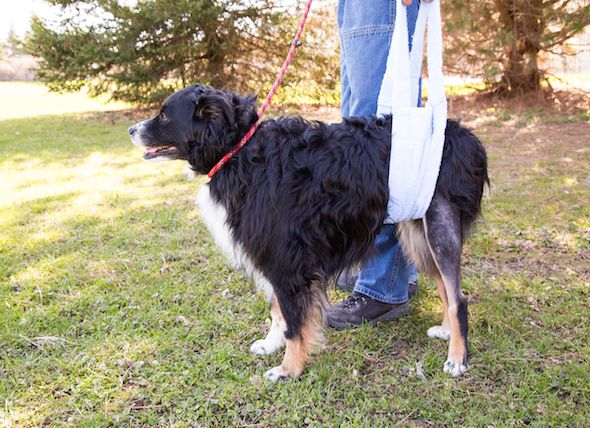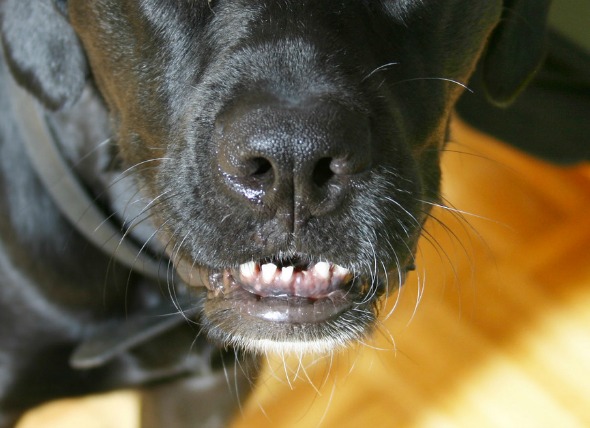

A hemangiosarcoma of the skin is a malignant tumor which arises from the endothelial cells. The endothelial cells make up the layer of cells collectively referred to as the endothelium, which lines the inner surface of blood vessels, including, but not limited to, the veins, arteries, and intestines. These cells line the entire circulatory system, and are responsible for the smooth flow of blood within the lumen (interior space) of all of the body's inner structures and tubular spaces.
Because this type of sarcoma grows from the blood cells, the growths themselves are filled with blood. This accounts for the dark blue or red coloring of the mass. If the growth is limited to the outer layer of skin, where it can be removed entirely, the prognosis may be guardedly optimistic, but because of the highly metastatic nature of this cancer, it is sometimes found to reach deep into the tissue, or to have arisen from a deeper, visceral location. In the latter case, the outcome is often fatal.
This type of cancer accounts for 14 percent of all hemangiosarcomas in dogs. At heightened risk are boxers, pit bulls, golden retrievers, German shepherds, and dogs between the ages of four and 15 years old.
These masses are most commonly present on the dog’s hind limbs, prepuce, and ventral abdomen, but may appear at any place on the body. The tumors may also change in size due to bleeding inside the growth. The following are symptoms related to hermangiosarcoma in dogs:
Although the cause of hemangiosarcoma of the skin is not known, it is known that particular breeds are at higher risk than others. These breeds include boxers, pit bulls, golden retrievers, German shepherds, English setters, and whippets, leading to the assumption that there is some basis in genetic predisposition. Of course, any breed can be affected, and at any age. Excessive exposure to sun, especially in light colored and short coated dogs, is also thought to predispose some dogs to this cancer.
Your veterinarian will perform a thorough physical exam on your dog, taking into account the background history of symptoms and possible factors that might have led to this condition. You will need to give a thorough history of your dog's health and onset of symptoms, including any details you have about your dog's breed and familial background, the types of activities your dog takes part in, and any physical or behavioral changes that might have taken place recently.
Routine laboratory tests will include a chemical blood profile and complete blood count. The results of these tests are usually normal but may show an abnormally low number of platelets (cells involved in blood clotting). Abdominal and thoracic X-rays will be taken to determine how invasive the hemangiosarcoma is, whether there is metastasis in the lungs or any other internal organs. In some cases, the tumor may even reach to the bone. Computer tomography (CT) scan and magnetic resonance imaging (MRI) can also be used to view the extent of the disease and in planning the surgery.
A skin biopsy remains the method of choice for confirmation of diagnosis. Your veterinarian will take a sample of tissue from the mass to have it microscopically examined by a veterinary oncologist.
The most successful outcome will require surgery along with chemical therapy. A wide surgical excision of the tumor, along with some of the normal skin tissue surrounding it is the typically the most effective treatment. However, if the tumor involves subcutaneous tissue, complete removal may be difficult to achieve.
After the initial surgery, your veterinary oncologist may recommend continued radiation therapy, especially if a complete resection of the tumor could not be achieved. Chemotherapy may also be an option but whether it is used or not will be decided by your veterinary oncologist.
As with other malignant tumors, dogs affected with this tumor have a limited lifespan after diagnosis. Surgery, radiotherapy, and chemotherapy may prolong your dog's lifespan, but not significantly. Dogs that have been diagnosed and treated for cancer need to be fed a diet that is specifically formulated for them. Your veterinarian will help you plan a diet for your dog posttreatment.
Postoperative pain is common, and your veterinarian will recommend pain relieving medications to minimize your dog's discomfort. However, never use any pain medication without your veterinarian's prior consent. There are some pain killers that may aggravate the bleeding problems in affected dogs. Use pain medications with caution and follow all directions carefully; one of the most preventable accidents with pets is an overdose of medication.
After surgery, you will need to set up a place in the house where your dog can rest comfortably and quietly away from other pets, active children, and busy entryways. Trips outdoors for bladder and bowel relief should be kept short and easy for your dog to handle during the recovery period. In addition, you will need to limit your dog's exposure to sunlight, and use pet safe sunscreen or cover ups when you do have to spend time in the sun.
Each dog is different, and some will survive longer than others. The location and extent of the tumor will determine the prognosis, but the average time of survival after surgery is often less than a year. Moreover, complete and permanent remission is rare.
 Excessive Vocalization in Dogs
Disruptive Crying, Whining and Barking in Dogs
Ex
Excessive Vocalization in Dogs
Disruptive Crying, Whining and Barking in Dogs
Ex
 Torn Knee Ligament in Dogs
Cranial Cruciate Ligament and Anterior Cruciate Ligament
Torn Knee Ligament in Dogs
Cranial Cruciate Ligament and Anterior Cruciate Ligament
 Inflammation of Body Blood Vessels in Dogs
Systemic Vasculitis in Dogs
Systemic vasculitis i
Inflammation of Body Blood Vessels in Dogs
Systemic Vasculitis in Dogs
Systemic vasculitis i
 Tooth Dislocation or Sudden Loss in Dogs
Tooth Luxation or Avulsion in Dogs
Tooth luxation
Tooth Dislocation or Sudden Loss in Dogs
Tooth Luxation or Avulsion in Dogs
Tooth luxation
 Flea Control and Flea Bite Allergies in Dogs
Flea bite hypersensitivity and flea allergic dermatitis
Flea Control and Flea Bite Allergies in Dogs
Flea bite hypersensitivity and flea allergic dermatitis
Copyright © 2005-2016 Pet Information All Rights Reserved
Contact us: www162date@outlook.com